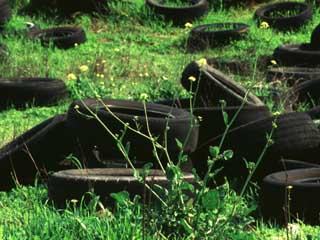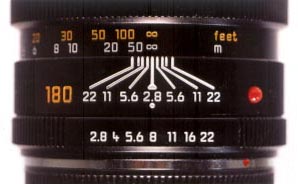How do F-Numbers Effect the Picture
Taken?
They change the depth of field for the photo being taken. F numbers
that are small such as F/32 make all visible objects appear to be in
focus and in the same plane. Larger F numbers such as F/2 will result
in photos that can only have one object in focus and all other objects
in front of, or behind that appear out of focus. Look at the two
examples of pictures below.
This is a
picture taken with a smaller opening and an F number of f/11
Notice all objects are in focus.
|
This is a
picture taken with a larger opening and an F number of f/2.4
Notice only the plant is in focus.
|

|

|
Why Does This Happen?
A smaller aperature, or lens opening will effect not only the amount of
light that can enter the lens but also the angles that that light may
enter from. A small aperature will limit the rays of light entering the
camera to rays that are close to parrallel to each other. These
nearly parrallel rays mimic those from objects that are far away. This
creates the illusion that all the objects are the same distance away
from the lens and therefore are all in focus. The only visual clue of
their relative distances are their size or placement in the image.
Return to Previous page


